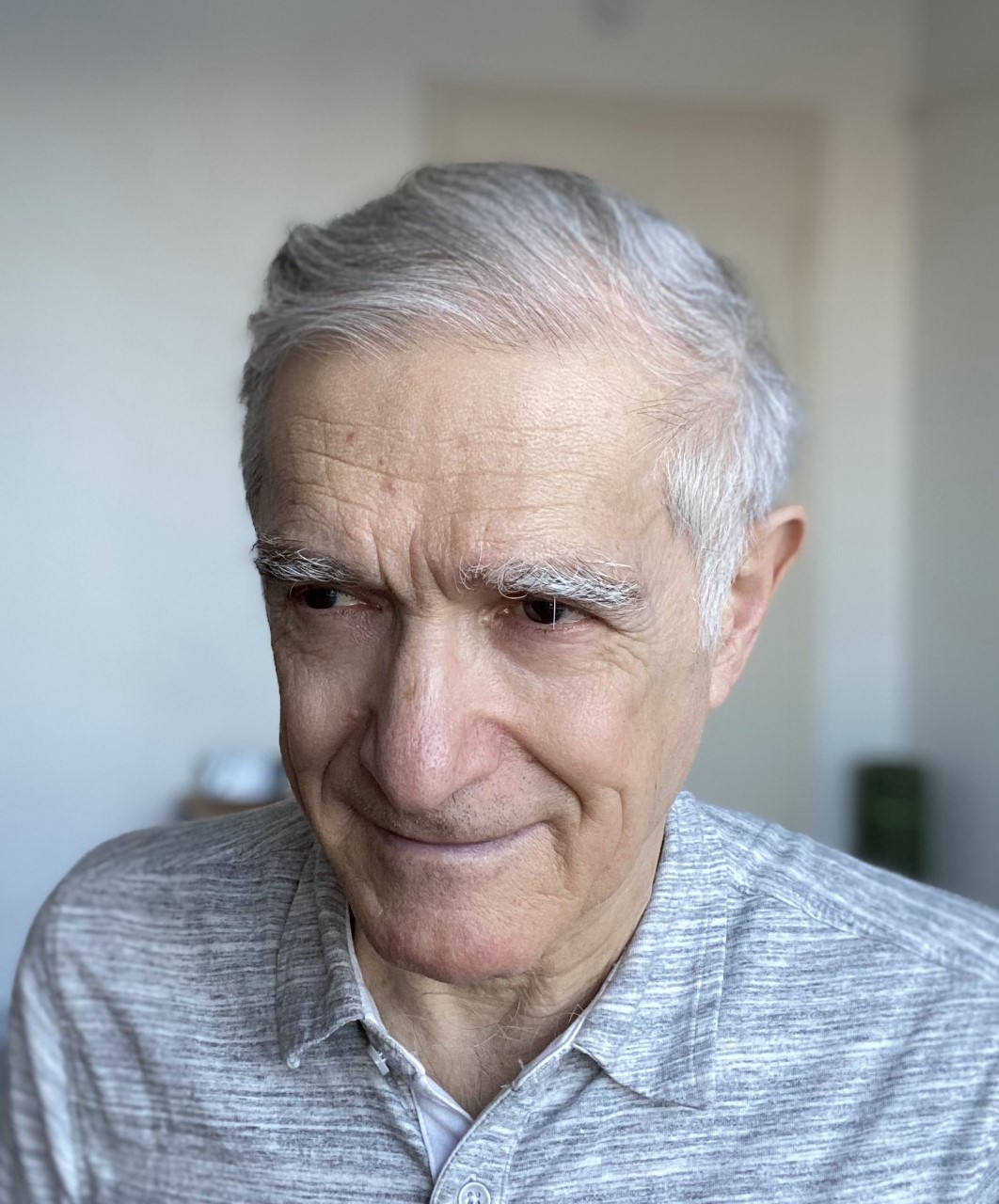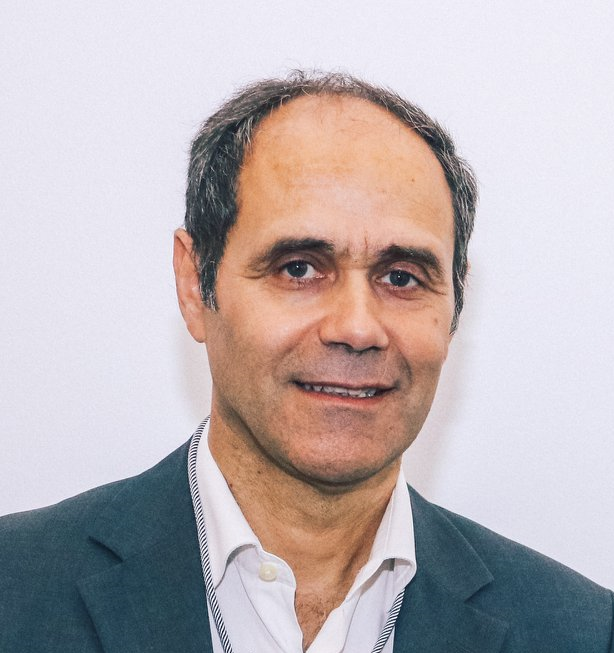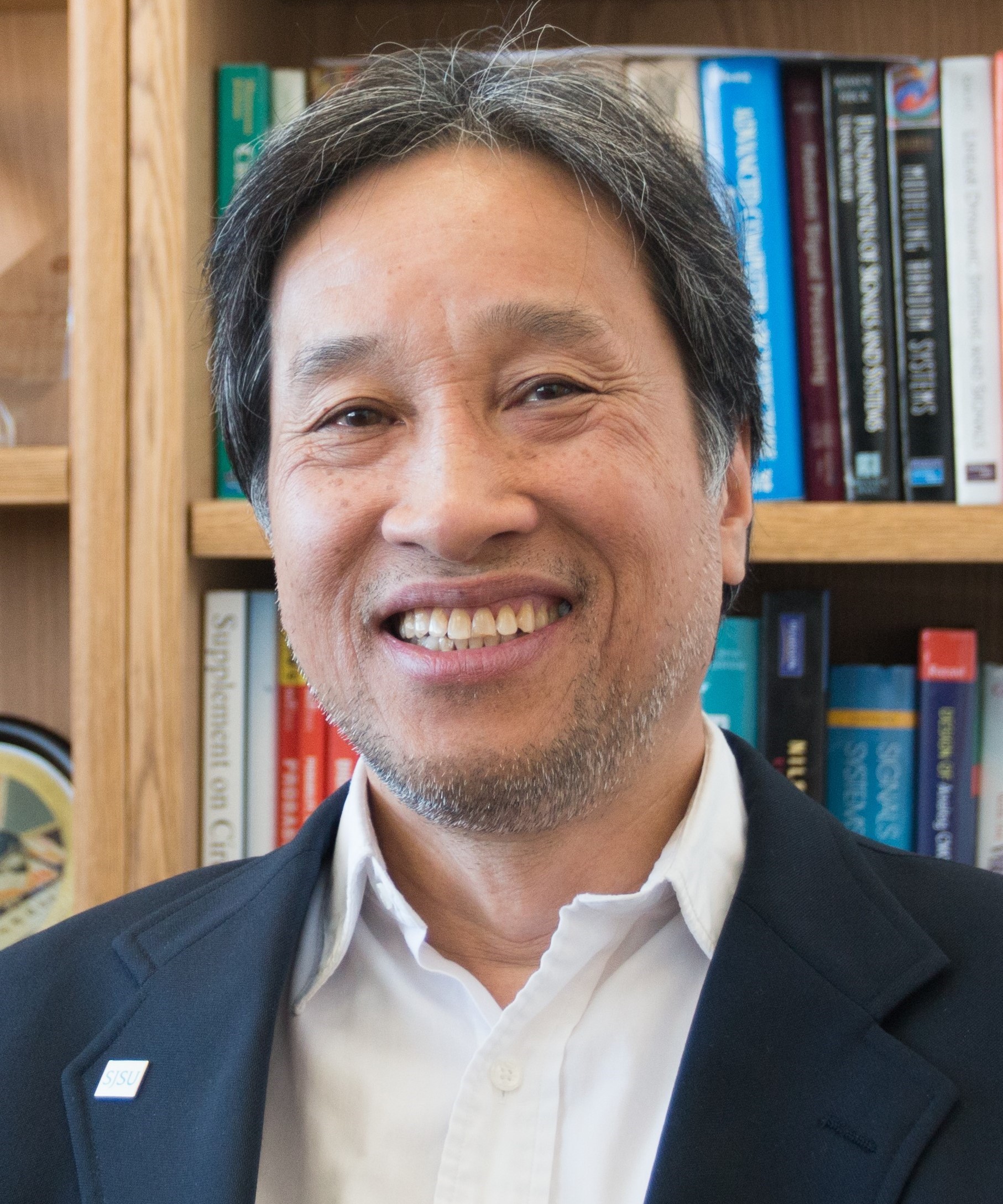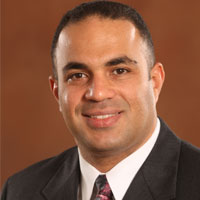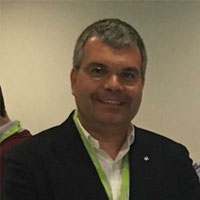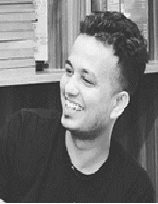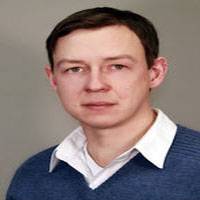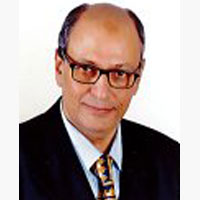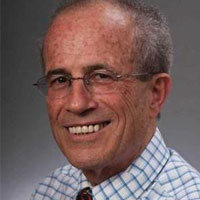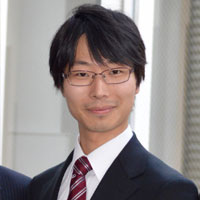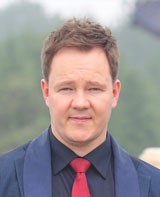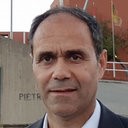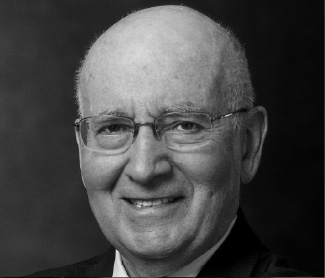Welcome to SPIN 2022




All papers of SPIN-2014, SPIN-2015, SPIN 2016, SPIN 2017, SPIN 2018, SPIN 2019 and SPIN 2020, SPIN 2021 have been published in IEEE Xplore Digital Library and have been indexed by Scopus, Google Scholar etc.)
In succession of International Conferences SPIN-2014, SPIN-2015, SPIN-2016, SPIN-2017, SPIN-2018, SPIN-2019, SPIN-2020, SPIN 2021, 9th International Conference on Signal Processing and Integrated Networks, SPIN-2022 will be organized by Amity University, Noida, on 25-26 August 2022. The Conference aims to bring together scientists, academicians and industrialists working in the field of Signal Processing and Integrated Networks to discuss new ideas and promote research work.
The conference will be devoted to all advancements in Signal Processing and Integrated Networks. Researchers from all over the country and abroad will gather in order to introduce their recent advances in the field and thereby promote the exchange of new ideas, results and techniques. The conference will be a successive catalyst in promoting research work, sharing views and getting innovative ideas in this field.
Objectives
The objective of SPIN-2022 is participation from Academia, Research Organizations and Industry in the following ways:- Technical Sessions
- Panel Discussions
- Industry Forum
- Keynote Speeches, Invited & Submitted papers
- Special Sessions on Selected Topics
This two-day conference will offer a unique opportunity to gain insight into state-of-the-art technology in the field and to network with international researchers and scientists.
Previous editions of SPINs have attracted researchers from across the world in the form of Invited Talks, Contributory Papers, Participation from Reputed Institutes of India and Abroad, Research Labs, Industry etc.
Technical Tracks
[A] Communications in Computer and Information Science(CCIS), Springer
Array signal processing, radar, sonar and acoustic signal processing, multimodal signal processing, distributed signal processing, adaptive signal processing, advancements in analog signal processors and DSP processors, architecture, implementation and applications of digital filters, artificial intelligence in signal & image processing, biomedical/genomic signal processing, biometric applications, signal compression & coding, information theory, forensics & security, multidimensional and multimodal signal processing, multimedia tools, applications & security, multi-rate signal processing, non-stationary, non-linear and non-Gaussian signal processing, sensor array, waveform diversity and multi-channel signal processing, signal processing in encrypted domain, signal processing in network analysis and VLSI architectures, signal processing using chaos, fractals and solitons, statistical signal processing, convex optimization and relaxation, computational linear and multilinear algebra, computer-intensive methods in signal processing (BOOTSTRAP, MCMC, EM, and PARTICLE FILTERING), signal and information processing over networks, multimedia signal processing, multimedia processing for tele-rehabilitation, sparse signal processing, signal processing and learning for big biological / biomedical data, RF signal processing, geophysical / optical/ smart sensor signal processing, signal processing theory and methods, signal processing for communications, signal processing over graphs and networks, nonlinear signal processing, signal processing for computer vision and robotics, signal processing for power systems, signal processing for education, signal processing for big data, signal processing for the internet of things, and application of DSP in remote sensors.
Computer-aided diagnosis, deep learning applications in image analysis, multimedia information retrieval, imaging informatics for healthcare, research, and applications, biomedical imaging and visualization, biomedical image datasets, representation of pictorial data, visualization, feature extraction, segmentation, image guided surgery and intervention, texture, shape and motion measurements, spectral analysis, digital anatomical atlases, statistical shape analysis, computational anatomy, computational physiology, virtual and augmented reality for therapy planning and guidance, telemedicine with medical images, telepresence in medicine, tele-surgery and image guided medical robots. X-ray, magnetic resonance imaging (MR), computed tomography (CT), position emission tomography (PET), optical coherence tomography (OCT), and ultrasound etc.
Imaging sensors and acquisition systems, illumination, sampling and scanning, quantization, colour reproduction, image rendering, display and printing systems, evaluation of image quality. Storage of images and video, database design, image retrieval, video annotation and editing, mixed media incorporating visual information, steganography, artificial intelligence in image processing, biomedical/genomic signal & image processing mathematical morphology, Markov models, classification, compression, identification, protection, recognition, restoration and segmentation image / video retrieval and authentication, document image processing and analysis, image / video watermarking embedding and detection, graphics and visualization, image-based modeling, holographic video, interpolation and super-resolution, image / video processing applications, mixed media incorporating visual information, image / video quality assessment, motion detection and estimation, image feature extraction, multi camera fusion, image filtering and enhancement, multiframe image restoration image formation, stereoscopic and 3-D processing, image pattern recognition, video analysis and event recognition, image representation and rendering, video annotation and editing, image / video compression, video segmentation and tracking, image / video coding and transmission, wavelets and multiresolution processing, , Innovative application of image and video processing technologies in astronomy, document processing, security, life sciences, earth sciences, remote sensing, weather forecasting, agriculture, biometric, and forensics.
Parameter estimation techniques, non-parametric estimation techniques, linear discriminant functions, dimension reduction techniques, nonmetric data, introduction to artificial neural networks, simple perceptrons, multi-layer perceptrons, radial basis function networks, mixture density, unsupervised clustering, unsupervised Hebbian and competitive learning, Hopfield network, correlated and time-varying events, support vector machines, generalization performance, boosting, kernel methods, deep learning, deep learning applications to image and vision problems, mathematical, physical and computational aspects of computer vision: image formation, processing, analysis, and interpretation; machine learning techniques; statistical approaches; sensors. image-based rendering, computer graphics, robotics, photo interpretation, image retrieval, video analysis and annotation, multi-media, biomedical signal denoising, assistive technology, deep neural network, CNN AND RNN based classification. etc.
Under this track we are expecting the papers from the following research areas: Parameter estimation techniques, non-parametric estimation techniques, linear discriminant functions, dimension reduction techniques, nonmetric data, introduction to artificial neural networks, simple perceptrons, multi-layer perceptrons, radial basis function networks, mixture density, unsupervised clustering, unsupervised Hebbian and competitive learning, Hopfield network, correlated and time-varying events, support vector machines, generalization performance, boosting, kernel methods, deep learning, deep learning applications to image and vision problems, mathematical, physical and computational aspects of computer vision: image formation, processing, analysis, and interpretation; machine learning techniques; statistical approaches; sensors. image-based rendering, computer graphics, robotics, photo interpretation, image retrieval, video analysis and annotation, multi-media, biomedical signal denoising, assistive technology, deep neural network, CNN AND RNN based classification. etc.
Under this track we are expecting the papers from the following research areas: Wireless Sensor Networks (WSN), Adhoc Networks, Cellular Networks, Content Distribution Networks, Flow and Congestion Control, Integrated Services Digital Networks (ISDN), Mobile and Wireless Technologies (UWB, MIMO, WiMAX, etc.), Multiple Access Techniques, Network security and Threat Management, Network Signal Processors, Next Generation Networks, Networking Issues and Challenges in Cloud Computing, Routing, Switching & Addressing, Optical Networking, Technologies, Switching and Network Elements, Signal Detection and Spectrum Estimation, Signal Processing in CDMA / WCDMA, Wireless Integrated Network Systems, OFDM, CDMA and Spread Spectrum, Modulation, Coding and Diversity, B3G/4G Systems, WiMAX, WLAN and WPAN, Channel Model and Characterization, Multi-Hop and Cooperative Communications, Interference Cancellation and MUD, Cognitive Radio and Software Defined Radio, Satellite & Space Communications, Multimedia Communications, Mobile Computing, Network Security and Cryptography, Multimedia Networking, Mobile Wireless Networks, Network Simulation and Modeling, QoE in wireless systems, Wireless access techniques, Wireless mesh networks, Wireless network coding, Wireless peer-to-peer, Wireless routing, Wireless security, WBAN, WPANs and WLANs. Electromagnetic Metrology, wave propagation and remote sensing, electromagnetics in biology and medicine Computational electromagnetics, hybrid methods, MMIC, Antenna theory and radiation, Microstrip and printed antennas, phase array antennas, RF and wireless communication, multipath, Mobile antennas, conformal and smart antennas, Microwave remote sensing and polarimetry, SAR, Subsurface imaging and detection technology, GPR, Active and passive remote sensing systems, Electromagnetic signal processing, Remote sensing of the earth, ocean, and atmosphere, Wireless power transfer and harvesting, Medical electromagnetics, biological effects, bioimaging, Microwave photonics, THz technology , Metamaterials and plasmonic, Monolithic and hybrid passive components and circuits, filters, couplers, and transitions, Signal generation and modulation circuits, Receiver and transmitter components, RF packaging and package modeling, MIMO techniques, Microwave and millimeter-wave systems, Wireless and cellular architectures, components, and circuits, Highly integrated packaging, Methods of maintaining signal integrity, RF circuits, and EMI/EMC etc.
Under this track we are expecting the papers from the following research areas: Internet of things, Smart cities, Digital health/Telehealth/Telemedicine, Smart agriculture, Smart grids, Reliability, Cloud Computing, Cluster computing and performance, Cognitive radio applications and spectrum management, Congestion and admission control, Cross-layer optimizations in wireless networks, Energy awareness in communication systems, Mobile computing, Multimedia communication, Multimedia communications over wireless, RFID systems, Networks and Protocols, Wireless intelligent networks, Wireless security system, Non-orthogonal multiple access techniques in 5G Networks, Cognitive radio and channel modeling in 5G networks, D2D in 5G networks, Performance analysis in 5G Networks, Cloud/CRAN-based 5G Networks, Small Cells in 5G Networks, Software defined networks in 5G Networks, 5G Ultra Dense Networks, Heterogeneous Networks in 5G Networks, Security and privacy in 5G Networks, Massive MIMO in 5G Networks, Network slicing in 5G Networks, IOT in 5G networks, PHY/MAC/ Network layer in 5G Networks
Under this track we are expecting the papers from the following research areas: Autonomous Robotic Systems, Trajectory Planning, Modelling and Simulation, Bipeds and Humanoids, Swarm Robotics, AI in Robotics, Distributed and Cloud Robotics, Bio-inspired Systems, service robots, Biomedical Applications, Human Robot Interaction, Robot Vision, Intelligent Robotic Systems, AI and Computational Intelligence, Algorithms, Communications and Control, Computer structure, Computational Theory, Embedded Systems, High-Performance Computing, Internet and multimedia systems, Encoding programs of parallel algorithm and vectors, Fault tolerance and computation theories etc.
Under this track we are expecting the papers from the following research areas: Electrochemical sensors, Biosensors, Electrical sensors, Thermal-based sensors, Mass-sensitive sensors, Gas sensors, Sensor applications, Sensor devices, Software for sensors, Mobility of nodes, Analytical methods for sensors, Analytical modelling for sensors, Sensor technology, new sensor principles, smart sensors, MEMS, NEMS, IOT sensors, IIOT sensors, and Sensor Standards etc. VLSI Architectures, Algorithms, Semiconductor device simulation and modelling, Semiconductor Technology, Functional and Formal Verification, Low power IC Design, Digital IC Design, Analog IC Design, mixed signal Design, Analog/Digital Integrated Circuits & Systems, Simulation Synthesis & Verification of Integrated Circuits and Systems, High-Level Synthesis for VLSI Systems, System on Programmable Chip Design, HDL (VHDL, Verilog etc.) Modelling, Processor Architecture and Modelling, ASIC Design, Testing and Design for Testability (DFT), FPGA Based Design, layout and synthesis, Test Generation Algorithms, Physical Design, Technology-related design, interconnect design, deep submicron design, asynchronous circuit design, memory design, Low-voltage, reliability-driven, Thermally-driven and radiation-hardening design, Dielectrics & Plasmas, power ICs and micro-sensors, IoT and Cyber-Physical Systems, RF Design, CMOS Technology and Devices, etc.
International Participation
Previous Versions of SPIN had participation from Countries like: Australia, Austria, Bangladesh, Bulgaria, Canada, Chile, China, Costa Rica, Czech Republic, Denmark, Egypt, Finland, France, Germany, Hungary, Iceland, Iran, Iraq, Israel, Italy, Japan, Jordan, Kazakhstan, Kuwait, Malaysia, Mauritius, Moldova, Nepal, New Zealand, Nigeria, Norway, Oman, Poland, Portugal, Republic of Macedonia, Romania, Russia, Saudi Arabia, Singapore, South Africa, South Korea, Slovakia, Spain, Sri Lanka, Sweden, Taiwan, Thailand, Tunisia, Turkey, UK, USA, Vietnam.
National Participation
Previous versions of SPIN attracted participation from 27 States of India (Out of 29) and have a nationwide visibility to the researchers of this area.
Previous versions of SPIN attracted papers from Many reputed institutions like :IIT-BHU, IIT Bhubaneshwar, IIT Delhi, IIT (ISM) Dhanbad, IIT Gandhinagar, IIT Gauhati , IIT Hyderabad, IIT-Indore, IIT Jodhpur, IIT Kanpur, IIT Kharagpur, IIT Madras, IIT – Mumbai , IIT Patna, IIT Ropar, IIT Roorkee.
IIIT Allahabad, IIIT Chittor , IIIT Guwahati, IIIT Gwalior, IIIT Hyderabad, IIIT Jabalpur, IIITDM Kancheepuram , IIIT-Trichy.
NIT Agartala, MNNIT Allahabad, MANIT Bhopal, NIT Durgapur, NIT Hamirpur, MNIT Jaipur, NIT Jalandhar NIT Kurukshetra, NIT Meghalaya, NIT Mizoram, VNIT Nagpur, NIT Patna, NIT Puducherry, NIT Raipur, NIT Rourkela, NIT Silchar, NIT Srinagar, SVNIT Surat, NIT Surathkal, NIT Tiruchirapalli, NIT Warangal.
BITS Pilani, BITS Pilani Dubai Campus, BITS Mesra, Central University Tezpur, DTU- Delhi, IIEST Shibpur, IGDTUW- Delhi, JNTU Hyderabad, JNU Delhi, Jamia Hamdard University, NSIT-Delhi, Symbiosis Institute of Tech Pune, Aligarh Muslim University.
Research Labs and Industry - Bhabha Atomic Research Center, Bharat Electronics Limited, CSIR Labs, National Physical Laboratory, CEERI, National Centre for Antarctic and Ocean Research, CDAC, Cadence Design Systems, DRDO, ISRO Research Labs, Indira Gandhi Centre for Atomic Research, Institute of Radio Physics Calcutta, Regional Cancer Centre-Trivandrum, Sarabhai Institute of Science and Technology , Vikram Sarabhai Space Center, Amazon, National Institute Abiotic Stress Management, Pune, TCS, Tata Elxsi.
Gallery (Previous SPIN)
Click HereAcademic Partners of SPIN 2022

Electromagnetics Laboratory, Chuo University, Tokyo, Japan

Department of Electronics, Mathematics and Natural Sciences University of Gavle, Gavle, Sweden
Partners of Previous SPIN
Academic Partners

Electromagnetics Laboratory, Chuo University, Tokyo, Japan

Department of Electronics, Mathematics and Natural Sciences University of Gavle, Gavle, Sweden
Industry Partners




Cellular Operators Association of India

Media Partner

Technical Support Partner







 Defence Research & Development Organization
Defence Research & Development Organization 

.jpg)
.jpg)
.jpg)
.jpg)

